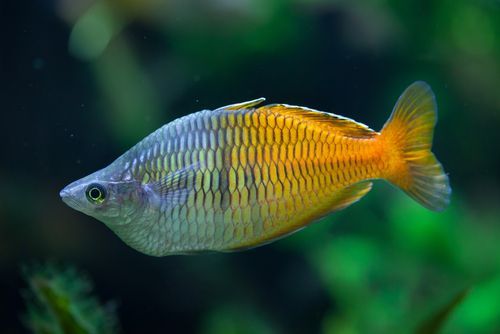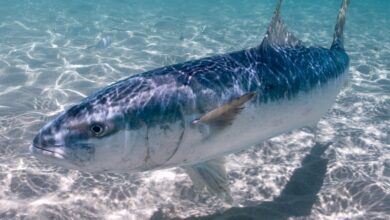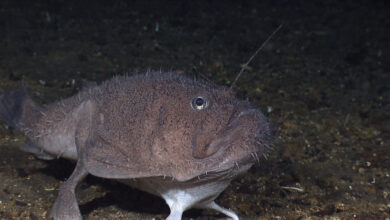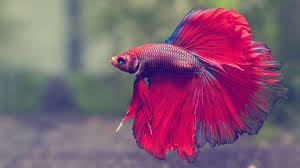The Fascinating World of Rainbow Fish

FAQs Rainbow Fish
What is so special about rainbow fish?
Rainbow fish have an incredible ability to change color and pattern depending on their mood, breeding condition, and environment. Their scales reflect light in such a way as to produce an iridescent, rainbow-like sheen not seen in many other freshwater fish. Some species also develop bright breeding colors and patterns when spawning. This, along with their lively, social behaviors in the aquarium, makes rainbow fish truly unique and fascinating to observe.
What is another name for a rainbow fish?
While rainbow fish is the commonly accepted name worldwide, they were historically known by other terms as well. When first described scientifically, the genus was called “Melanotaenia,” from the Greek for “black spot.” Early European settlers often referred to them more generally as “river minnows” due to their small size and freshwater habitat. Older scientific literature may still use Melanotaenia, but rainbow fish prevails as the popular name today.
What age is a rainbow fish for?
Rainbow fishes are a suitable choice for beginners looking for a smaller, hardy community fish. However, they do best in groups of 6 or more for natural schooling behavior. Most local fish stores will stock juvenile rainbow fish around 1-2 inches in size, making them appropriate for aquariums over 30 liters. With regular care, including weekly water changes, rainbow fish can live 5-7 years on average, providing entertainment and color for the whole lifetime of even a young aquarist.
Can rainbow fish be eaten?
Yes, rainbow fish are totally safe and make for interesting feeders in community aquariums. In the wild, they eat algae, insect larvae, tiny crustaceans, and worms. In the home aquarium, high-quality flake foods, freeze-dried tubifex worms, and brine shrimp work well. They may also accept small pellet foods. To encourage their natural behaviors, occasional live or frozen bloodworms, daphnia, and brine shrimp provide exercise by chasing moving foods across the surface and substrate. Regular small meals 2-3 times per day keep rainbow fish healthy without overfeeding.
How fast do rainbow fish grow?
Under optimum care, including warm water, good filtration, and regular feeding, rainbow fish can achieve up to 75% of their adult size within the first year. Growth rates depend on water temperature and diet quality, but on average, rainbow fish may gain 1/4 to 1/2 inch per month as juveniles. They reach sexual maturity around 5-6 cm or 2-3 inches. Most rainbow fish species top out at 5-7 cm as adults over 12-18 months. Larger species may continue growing up to 10 cm given several years, but 6-7 cm is typical for most home aquarium rainbow fish.
Rainbow fishes are among the most vibrantly colored freshwater fish found across Australia. With their shimmering scales reflecting a rainbow array of blues, reds, oranges and yellows, rainbow fish can transform an ordinary aquarium into a captivating underwater landscape.
Rainbow Fish Habitat and Distribution
Rainbow fish are native to Northern Australia, New Guinea and surrounding islands, where they inhabit streams, rivers and lakes across tropical and subtropical regions. There are over 20 different species of rainbow fish that vary in coloration and markings. The most commonly encountered and easiest to care for aquarium species is the Eastern Rainbowfish (Melanotaenia splendida).
In the wild, rainbow fish inhabit weed-choked freshwater habitats with dense submerged foliage that provides cover and areas to feed and spawn. They prefer quiet streams and pools with moderate flows, temperatures between 22-28°C, and a neutral to slightly acidic pH of around 6-7. Some rainfall-dependent habitats can dry up seasonally, so rainbow fish have evolved to survive in isolated pools by filtering atmospheric oxygen through their mouth and gastrointestinal tract.
Rainbow Fish Behavior
Rainbow fish are lively, social freshwater fish that school together in groups for protection against predators. In a community aquarium, rainbow fish will appreciate having at least 6-8 of their own kind for added security and natural behavior. They are not aggressive towards tankmates but prefer having the majority of their numbers made up of other rainbow fish for a visually appealing mixed species aquarium display.
Rainbow fishes spend their days swimming energetically throughout the water column but also rest amongst dense foliage near the bottom of the tank. As omnivores, they feed on algae, insect larvae, worms, and small crustaceans. In aquariums, their diet can include frozen and live foods along with quality flakes and pellets formulated for tropical community fish.
Rainbow Fish Lifespan
The average lifespan of rainbow fish kept in optimal aquarium conditions is 5-7 years. However, some rainbow fish have been recorded living as long as 10 years in captivity. As with any fish, lifespan depends greatly on water quality, diet and overall living environment. Proper care including weekly partial water changes, balanced nutrition and a community setup will help rainbow fish thrive and potentially live closer to their maximum potential lifespan.
Rainbow Fish Size
Most rainbowfish species reach sizes between 5-7 cm as adults. However, some larger species can grow upwards of 10 cm. The Eastern Rainbowfish maxes out around 6-7 cm standard length on average. At this moderate size, rainbow fish are well-suited to mid-sized home aquariums from 30-60 liters in volume. Larger groups of 6-8 fish in at least a 60-liter aquarium allow them plenty of swimming space to display natural schooling behaviors.
Rainbow Fish Name
Interestingly, rainbow fishes were not always known by this common name. When first encountered by early European settlers, they were often referred to simply as “river minnows.” However, it wasn’t long before captive specimens revealed their extraordinary color changes depending on mood, breeding coloration revealing iridescent hues not seen in the wild. This inspired references to their “rainbow-like” appearance that stuck and became popularized as the definitive name we know today. While some scientific literature may still use older references to the genus “Melanotaenia,” rainbow fish has become their widely recognized vernacular name globally.
Rainbow Fish Aquarium
To recreate rainbow fish’s natural habitat indoors, the ideal aquarium setup includes:
- A minimum tank size of 60 liters or 30 gallons for a group of 6-8 rainbow fish
- Soft, acidic water with a pH of 6.0-7.0 and temperature 22-28°C
- Dense live plant coverage such as Anacharis, cryptocoryne, Vallisneria, or Java moss
- Decor such as driftwood, rocks, and terracotta pots for hiding spots
- Gentle water flow from a sponge filter or internal power filter
- Gravel substrate for natural browsing and plant rooting
With these elements provided, rainbow fish will feel at home exploring, foraging, and displaying their brilliant colors. Regular weekly water changes of 20-30% tank volume are important to keep water quality optimized for their health and longevity. A quality diet will also promote rainbow luster in even the most vibrant specimens.



